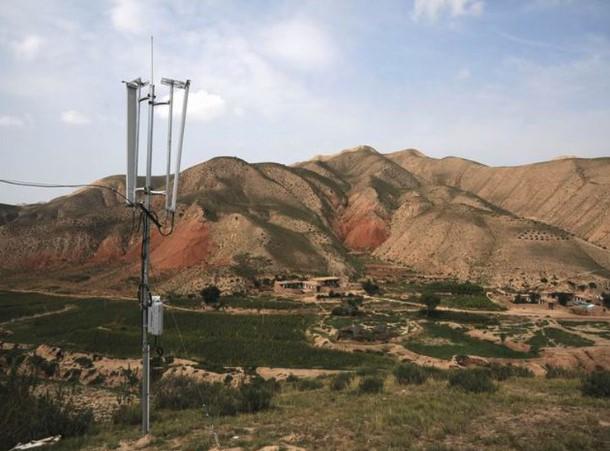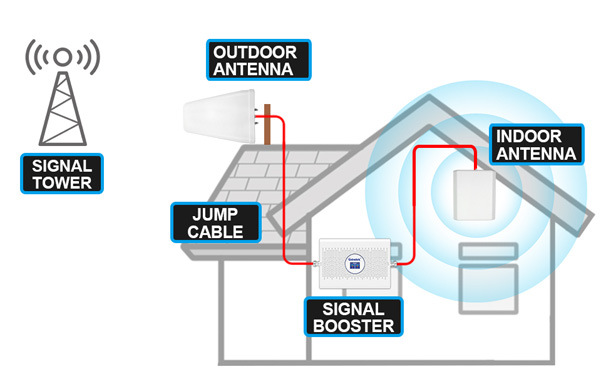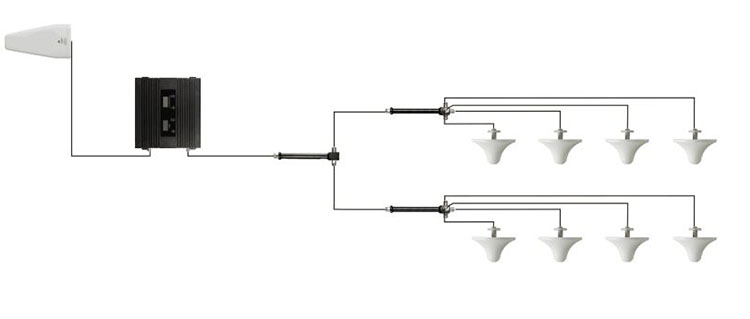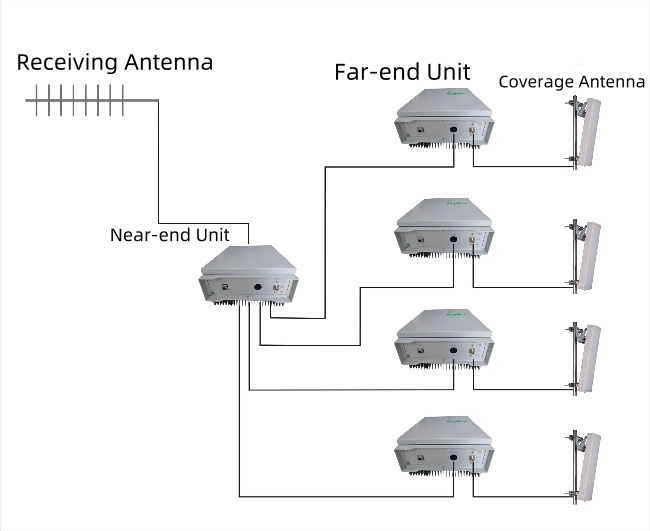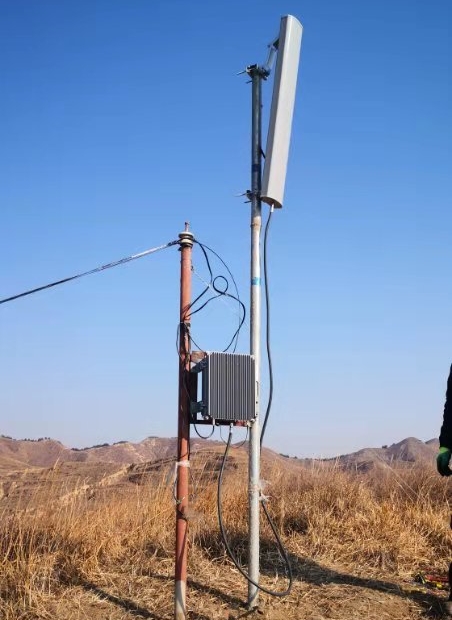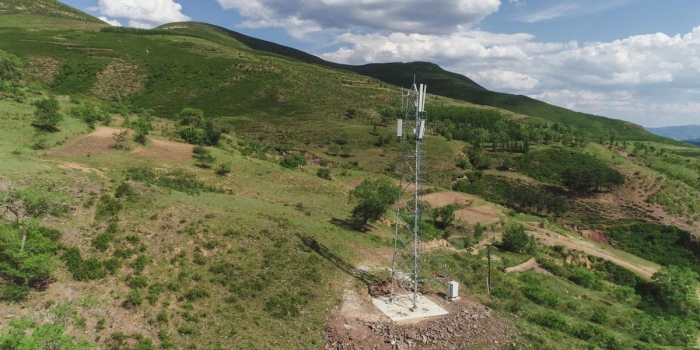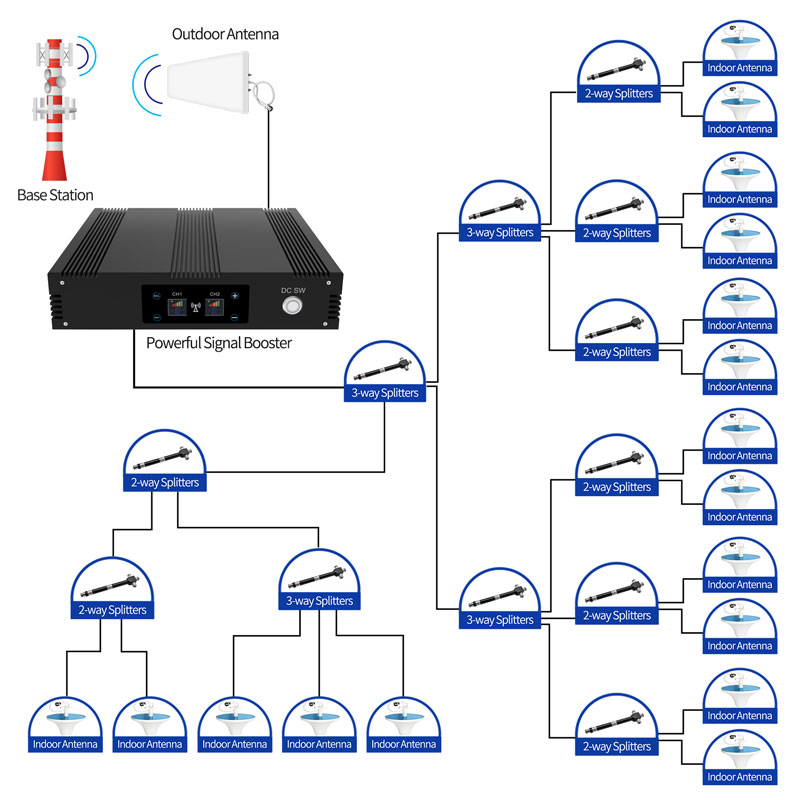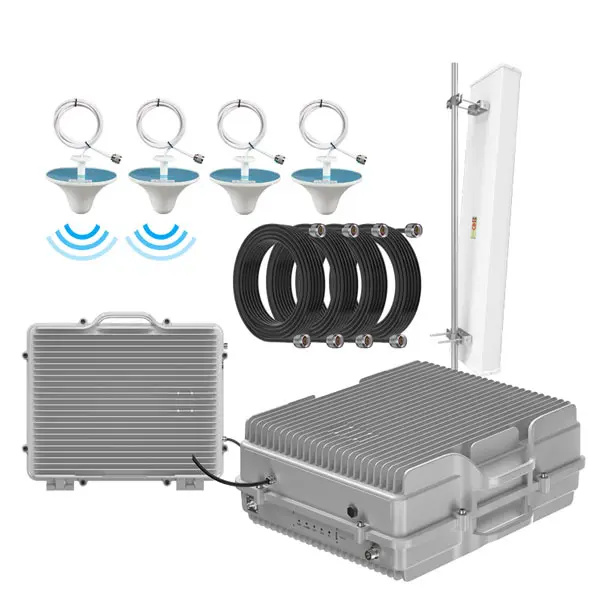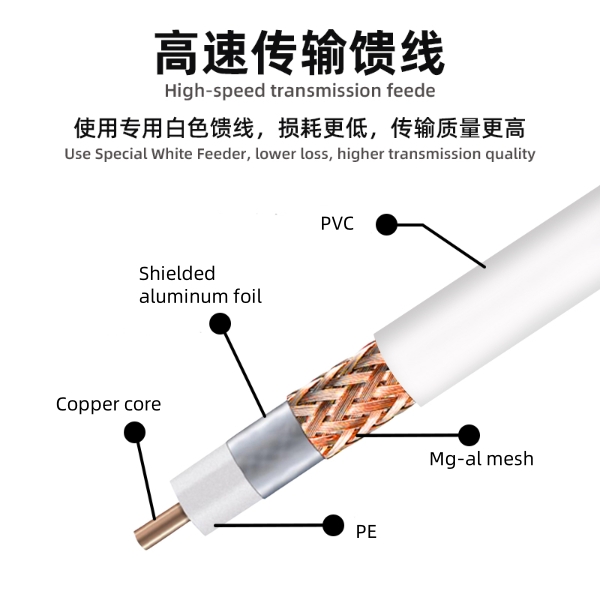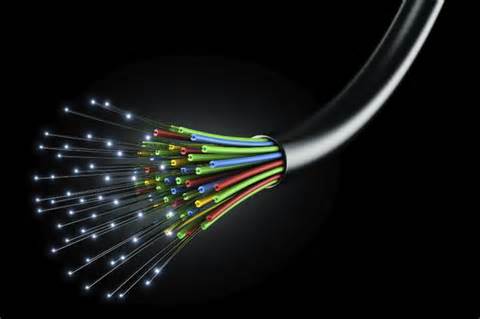Many of our readers living in rural areas struggle with poor cell phone signals and often search online for solutions like cell phone signal boosters. However, when it comes to selecting the right booster for different situations, many manufacturers do not provide clear guidance. In this article, we’ll give you a simple introduction to choosing a cell phone signal booster for rural areas and explain the basic principles of how these devices work.
1. What Is a Cell Phone Signal Booster? Why Do Some Manufacturers Refer to It as a Fiber Optic Repeater?
1.1 What is a Cell Phone Signal Booster and How Does It Work?
A cell phone signal booster is a device designed to amplify cell signals (cellular signals), and it’s a broad term that includes devices like mobile signal boosters, mobile signal repeaters, and cellular amplifiers. These terms essentially refer to the same type of device: a cell phone signal booster. Typically, these boosters are used in homes and small commercial or industrial areas up to 3,000 square meters (about 32,000 square feet). They are standalone products and are not designed for long-distance signal transmission. The complete setup, which includes antennas and the signal booster, usually uses coaxial cables like jumpers or feeders to transmit the cell signal.
1.2 What is a Fiber Optic Repeater and How Does It Work?
A fiber optic repeater can be understood as a professional-grade cell phone signal repeater designed for long-distance transmission. Essentially, this device was developed to solve the significant signal loss associated with long-distance coaxial cable transmission. The fiber optic repeater separates the receiving and amplifying ends of the traditional cell phone signal booster, using fiber optic cables instead of coaxial cables for transmission. This allows for long-distance transmission with minimal signal loss. Due to the low attenuation of fiber optic transmission, the signal can be transmitted up to 5 kilometers (about 3 miles).
Fiber Optic Repeater-DAS
In a fiber optic repeater system, the receiving end of the cell signal from the base station is called the near-end unit, and the amplifying end at the destination is called the far-end unit. One near-end unit can connect to multiple far-end units, and each far-end unit can connect to multiple antennas to achieve cell signal coverage. This system is not only used in rural areas but also in urban commercial buildings, where it is often referred to as a Distributed Antenna System (DAS) or an Active Distributed Antenna System.
Cellular Fiber Optic Repeater for Rural Area
In essence, cell phone signal boosters, fiber optic repeaters, and DAS all aim to achieve the same goal: eliminating cell signal dead zones.
2. When Should You Use a Cell Phone Signal Booster, and When Should You Opt for a Fiber Optic Repeater in Rural Areas?
2.1 Based on our experience, if you have a strong cell (cellular) signal source within 200 meters (about 650 feet), a cell phone signal booster can be an effective solution. The farther the distance, the more powerful the booster needs to be. You should also use better-quality and more expensive cables to reduce signal loss during transmission.
Lintratek Kw33F Cell Phone Booster Kit for Rural Area
2.2 If the cell signal source is beyond 200 meters, we generally recommend using a fiber optic repeater.
Lintratek Fiber Optic Repeater Kit
2.3 Signal Loss with Different Types of Cables
Here’s a comparison of signal loss with different types of cables.
| 100-meter Signal Attenuation | ||||
| Frequency Band | ½Feeder Line (50-12) |
9DJumper Wire (75-9) |
7DJumper Wire (75-7) |
5DJumper Wire (50-5) |
| 900MHZ | 8dBm | 10dBm | 15dBm | 20dBm |
| 1800MHZ | 11dBm | 20dBm | 25dBm | 30dBm |
| 2600MHZ | 15dBm | 25dBm | 30dBm | 35dBm |
2.4 Signal Loss with Fiber Optic Cables
Fiber optic cables generally have a signal loss of about 0.3 dBm per kilometer. Compared to coaxial cables and jumpers, fiber optics have a significant advantage in signal transmission.
2.5Using fiber optics for long-distance transmission has several benefits:
2.5.1Low Loss: Fiber optic cables have much lower signal loss compared to coaxial cables, making them ideal for long-distance transmission.
2.5.2High Bandwidth: Fiber optics offer much higher bandwidth than traditional cables, allowing more data to be transmitted.
2.5.3Immunity to Interference: Fiber optics are not susceptible to electromagnetic interference, making them particularly useful in environments with a lot of interference.
2.5.4Security: Fiber optic cables are difficult to tap into, providing a more secure form of transmission compared to electrical signals.
2.5.5Through these systems and devices, cellular signals can be transmitted efficiently over long distances using fiber optics, meeting the complex needs of modern communication networks.
3. Conclusion
Based on the above information, if you’re in a rural area and the signal source is more than 200 meters away, you should consider using a fiber optic repeater. We advise readers not to purchase one online without understanding the specifics of fiber optic repeaters, as this could lead to unnecessary expenses. If you have a need for cell (cellular) signal amplification in a rural area, please click here to contact our customer service. After receiving your inquiry, we will promptly provide you with a professional and effective solution.
About Lintratek
Foshan Lintratek Technology Co., Ltd. (Lintratek) is a high-tech enterprise founded in 2012 with operations in 155 countries and regions around the world and serving more than 500,000 users. Lintratek focuses on global services, and in the field of mobile communication, is committed to solving the user’s communication signal needs.
Lintratek has been a professional manufacturer of mobile communication with equipment integrating R&D, production, and sales for 12 years. Signal coverage products in the field of mobile communications: mobile phone signal boosters, antennas, power splitters, couplers, etc.
Post time: Aug-23-2024








